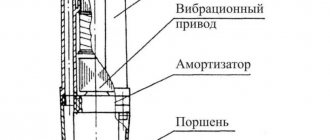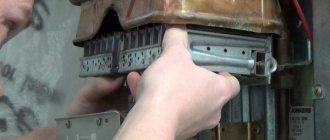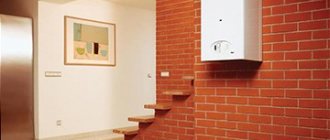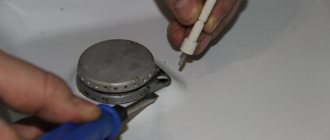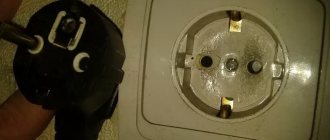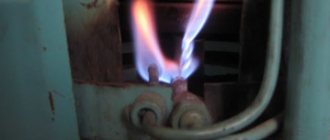When renovating and improving a room, people first of all care about the external decor, and initially it is worth designing power supply points in the home.
Electrical wiring is often laid under plaster; this method is practiced in apartment buildings and private buildings built from block or brick.
Symptoms of the problem
Under normal conditions, network devices should not become hot. If you touch the plastic while electrical appliances are running, the plug, cable or socket will always remain cold. Even a slight increase in temperature warns of problems in functioning.
At the first stages, the processes inside the devices go unnoticed by the user. A person pays attention already when an unpleasant smell of burning or sparks appears. Upon contact, the element produces an electric shock. If the outlet gets hot, there is a problem with the design.
Symptoms of device malfunction Source zen.yandex.ru
If changes are ignored, the device damages the fuses of switched on electrical devices, which leads to the combustion of electronic chips. Automatic protection in the shield is supposed to protect the equipment from troubles, but it wears out over time. If neglected, the problem will cause a fire.
Emergency cases
In the event of sparks and fire, you should immediately turn off the electricity in the entire apartment and call the fire department or electrician.
Another emergency case is electric shock to a person. If the wiring is faulty, injury can easily result from contact with an electrical appliance, exposed wire, or from a regular outlet. The victim should immediately call an ambulance, and while they are on the way, provide first aid:
- Give oxygen: open the window, unfasten the buttons on clothes and the zipper, sometimes it is necessary to clean the growth cavity.
- The head should be thrown back and the lower jaw should be pushed forward.
- Perform a closed heart massage: clasp your hands together and press your palms on your chest (on the xiphoid process) thirty times.
- Cover the victim’s nose with one hand and blow twice into the mouth.
You need to repeat until your heartbeat and breathing are restored.
You cannot hesitate in such situations; every second of delay can cost a person his life.
Keeping your apartment and house clean is the key to health, good mood and comfort. But it is important to carry out a timely inspection of the condition of the electrical wiring. In fact, it is a vital element of the functioning of a residential building. At the first sign of a malfunction, you need to turn off the power to the house and call a technician.
The culprits of the breakdown
Most household fires occur due to problems with electrical networks. Trouble could have been prevented at an early stage by determining what caused it and where to look. For convenience, the culprits of the breakdown were divided into 3 volumetric groups.
Fork
The socket gets hot very often, but the reasons lie in other devices. The faulty component sparks when connected to the network. During prolonged operation (10 minutes or more), the temperature of the plastic case, cable near the base and metal plugs increases. The causes of the problem may be:
- loose contacts;
- loose connections;
- loosened bolts.
Changes at the fork cause loose fit. The malfunction occurs when several devices with different plug sizes are connected to one source. Constantly changing design parameters weakens the device, so the sockets get hot.
The device heats the outlet Source 220.guru
Often a malfunction is caused by a high load when working through an extension cord, especially a homemade one. The culprit of the breakdown may be a low-quality finished model. To prove the plug is defective, professionals recommend connecting the element to another network. If after 15 minutes the case or metal parts are warm, then the problem is with the device.
Design features
VVGng is a power cable with copper conductors. The core insulation is made of polyvinyl chloride plastic. The insulation material contains additives that make it flame retardant. This conductor is available with a number of cores from 2 to 5. For ease of installation, the core insulation is color-coded, which can be done by completely painting the core insulation, or with a colored stripe. The outside of the cable is covered with a sheath made of the same PVC plastic as the core insulation. The core can have a single-wire or multi-wire design. The cross-sectional shape of the core can be round or segmented.
Video description
Why does the socket get hot?
Socket
The power of the element often does not correspond to the characteristics of the equipment that is connected to electricity. On average, a boiler socket must withstand 16 A. At maximum load, the component heats up and sparks. The problem arises when installing low-quality Chinese products or using old Soviet models.
If the installation rules are not followed and the insulation of the conductors is broken, a breakdown occurs. Incorrect use or sudden pulling of the plug from the socket often leads to loosening of the structure. The contacts weaken or oxidize, which provokes a change in temperature.
Parts of an electrical device Source materialexpert.ru
The electrical device may become warm when connecting the washing machine in the bathroom. In rooms with high humidity, it is necessary to use elements with moisture protection. Users in the bathroom install a regular outlet or power the equipment through an extension cord from another room. Under unfavorable conditions, contacts oxidize, which leads to breakdown.
An advanced malfunction is easy to notice visually during inspection. Defects appear on the plastic when the panel melts. The device can be checked by connecting to it a device with a known working plug. If the plug or housing is warm, the problem is with the electrical element.
Device failure Source poradu24.com
To find out why the outlet is heating up, the device must be disassembled. Before starting work, be sure to turn off the power to the apartment. Unscrew the bolt from the structure and remove the cover. For a built-in model, the fastening tabs are loosened; for an overhead model, the screws are removed. To move the element away from the wall, you need to bend the electrical cable slightly.
When diagnosing, carefully inspect the springs and contact plates. Carefully examine the plastic and metal parts of the outlet. The malfunction manifests itself in the form of charred or melted elements. When exposed to high temperatures, polymer components crack.
Wiring
Electrical networks indoors are designed for a certain load. When laying the system, engineers calculate the maximum throughput parameters. In older buildings, wiring is oriented towards lower energy consumption than is accepted by modern standards. The more electrical appliances running, the greater the pressure.
In new buildings or in private homes, people often neglect the rules. Unscrupulous construction companies carry out calculations with violations. When laying the wiring yourself, the wiring is not done according to the technology or deviates from the requirements.
Extension cord with devices included Source 220.guru
When creating electrical networks in residential buildings, aluminum cables with a diameter of 2.5 mm are used. This design will withstand a current of up to 20 A or a voltage of 4.4 W. If several powerful devices (boiler, oil heater) are simultaneously connected to one pair, then the operating norm will be exceeded. When used regularly at maximum settings, the plug in the socket heats up.
To find out the limiting parameters of a pair, measurements are needed. The load is determined using the formula. The cross-section of the wire should be cleaned using a compass. The cable diameter is squared and multiplied by 0.785. The resulting result is compared with the readings in a special table.
Household voltage readings Source lightika.com
If the parameters of the contact pair are greater than the data for electrical appliances in the instructions, then the wiring copes with the voltage. If it is exceeded, the plug of the device in the socket will heat up. The calculations must take into account all equipment that is connected to the system.
Explanation of the abbreviation NYM
The Latin abbreviation NYM stands for the following:
- N – standard type cable (German gradation);
- Y – the insulating sheath of the cores is made of polyvinyl chloride (PVC);
- M – with outer shell.
As usual, the absence of the letter “A” in the first place indicates that the cable cores are made of copper. In addition to the three standard letters in the designation, J or O can be added through a hyphen - with or without a yellow-green conductor (ground conductor).
After the alphabetic symbols there are necessarily digital symbols, indicating the number of cores and the cross-section of each of them. For example, the product NYM-O 4×4.5 - 0.66 can be deciphered as follows:
- standard cable with polyvinyl chloride core insulation and outer sheath;
- consists of four cores with a cross-sectional area of 4.5 square meters. mm each;
- used at voltages up to 0.66 kV (660 V).
Color coding
Such a cable must be produced with standardized color markings. The absence of this indicates that the product is not certified and is a counterfeit. The standards for the color of conductors are prescribed in the rules for electrical installations (PUE).
The set of colors varies depending on the exact number of cores located inside the outer sheath:
- there are no regulations for single-core cables;
- two conductors without a grounding cable - black and blue conductors;
- three cores without a grounding cable - black, brown and gray;
- four cores without a grounding cable - black, brown, gray and blue;
- three cores with a grounding cable - black, blue and yellow-green;
- four cores with a grounding cable - black, brown, gray and yellow-green;
- five cores with a grounding cable - black, brown, grey, blue and yellow-green.
Depending on the color marking, specialists can easily determine the main purpose of the cable. The blue wire is usually used to connect the neutral wire in single-phase networks. In three-phase, the blue core acts as a neutral. The yellow-green conductor in all cases serves as a grounding conductor.
Important! In accordance with GOST, the NYM cable should not contain conductors with white or white-blue insulation. If there is one, the conclusion is simple - it is a fake. Further use of such products, if possible, is at your own peril and risk.
How to fix
If the electrical network does not function properly, it becomes an object of increased danger. Operation of the devices is prohibited at the slightest disturbance in operation, especially when the temperature changes or parts melt. You can fix the problem yourself or seek help from specialists.
Problem with the socket
Any work with electricity is carried out after the current supply has been stopped. In a home or room, turn off the machine or unscrew the plugs on the panel. If the terminal in the socket does not press the cable well, then tighten the screw until it stops. If the spring is damaged, professionals advise replacing the part with a new one.
If the brass plates in the device are deformed, then the elements do not fit well. Metal components should be bent and put into the correct mode. If the end of the cable is damaged, the insulating material melts. Carefully remove the soft material, exposing 7 mm, and then insert it into the terminal.
Common Features for These Cables
According to clause 4.1 a)-e) GOST 31996-2012, the general characteristics for these VVG cables are:
clause 4.1 a) according to the material of current-carrying conductors: copper conductors (without designation);
clause 4.1 b) by type of insulation material of current-carrying conductors: insulation made of polyvinyl chloride plastic, including reduced fire hazard (B);
clause 4.1 c) by the presence and type of armor: unarmored (D),
clause 4.1 d) according to the type of material of the outer sheath or protective hose: made of polyvinyl chloride plastic, including reduced flammability or reduced fire hazard: outer sheath (B),
e) by the presence of a metal screen: without screen (without designation);
Video description
Why does the outlet get hot and how to fix it.
Malfunctions in the plug
Models with a cast body cannot be disassembled. If a problem is detected during operation, the sealed structure should not be attempted to be repaired. The wire is carefully cut with a construction knife, the ends of the cable are stripped and fixed to a new plug.
If the model is collapsible, then you can eliminate the faults. If the screw is loose, tighten the part using a screwdriver until it stops. When the insulating material burns, the melted area is cut off, the cable is stripped and fixed on the nut. Oxidation on the contacts is removed with sandpaper.
Collapsible design Source uk-parkovaya.ru
Having determined why the outlet is heating up, it is easy to eliminate the problem yourself. The plug must fit the installed electrical outlet. For technical reasons, the Soviet model should not be connected to a modern design, so it is better to replace the outdated version with a new one.
Wiring irregularities
If the electrical network was installed more than 20 years ago, then the system must be changed. Energy demands have increased significantly. The minimum load in Soviet times barely reached 10 A, so the owners had enough of 2 sockets in each room. Outdated wiring will not withstand the simultaneous inclusion of high-power and medium-sized equipment.
The electrical network in the home is changed when the cable cross-section is small. The wire may be modern copper, but its characteristics are not suitable for the loads. In old houses they used models with a diameter of 1.5 mm. During active use, the network heats up, which causes the machine to turn off.
To keep the sockets from getting hot Source air-ventilation.ru
If you know why the plug in the socket heats up when the washing machine and kettle are running at the same time, then it’s worth replacing the system. When updating the electrical network, they are guided by the actual power. A coefficient for the future reserve is added to the obtained parameters.
Fire
If you don’t figure out why the plug in the socket is heating up, a fire may occur. Failure inside the structure or improper use of an electrical device leads to a fire. Ignition occurs when there is a short circuit in the wiring.
You can extinguish a burning or smoking socket only after turning off the power. Quickly unscrew the plugs or deactivate the machine lever on the electrical panel. To avoid electric shock, do not touch the cable or cord with bare hands. If there is no access to the switch, then use pliers to pull out the problematic element. The tool is only suitable with rubberized handles.
The socket on the wall is on fire Source lider-press.by
It is forbidden to extinguish sockets with water, so the procedure is carried out using powder, carbon dioxide or chemical fire extinguishers. In the absence of special equipment, knock down the flame with a dense natural cloth, which is applied to the flaming element. You can cover the fire with dry sand or earth.
Various indications for these cables
According to clause 4.1 e)-g) GOST 31996-2012 decoding for these cables VVG, VVGng(A) and VVGng(A)-LS:
f) on performance in terms of fire danger indicators:
- flame retardant when installed alone (no designation);
- flame retardant during group installation (ng): according to category A - ng(A),
- flame retardant when installed in groups, with reduced smoke and gas emissions (ng-LS);
g) according to the cross-sectional shape of the cable:
- round (no designation);
- flat (P).
In accordance with clause 6.3.2, cables of versions “ng” and “ng-LS” should not spread fire when laid in groups. Test category A is established in the technical specifications for cables of specific brands.
According to clause 6.3.3, cables of “NG-LS” versions must have low smoke and gas emissions during combustion and smoldering.
Rules for different types of wiring
For each type of electrical installation, you must adhere to certain rules.
The closed type is the safest, since when used, all wires are hidden and protected from mechanical stress. But it is a rather long and labor-intensive preparation procedure, namely, you need to at least prepare the “tunnels” in the wall. This method is good to use if your walls are lined with plasterboard, then to attach the wires it is enough to place the wiring behind the sheet.
Open wiring is the easiest way to lay wires. The advantage of this method is the ease of replacing or repairing the cable if damaged. In most cases, it is used in utility rooms.
The combined method of laying electrical wiring combines a closed and open laying, which simplifies the task, but nevertheless it has its own standards. Boxes for laying lines are chosen mainly from plastic; they are more practical and quite reliable. There must be free space in the box to accommodate all the wires.
It is necessary to use special flat wires APRV, APR. In the presence of flammable walls, asbestos insulation was previously used (thickness according to standards should not be less than 0.5 cm). However, today there are other safe materials with excellent insulating properties. The insulating layer is located between the wall and the wires, and in the event of a short circuit it prevents the wall from igniting.
Tips for choosing
When going to the market for such a cable, be careful, since most of the products that sellers call the domestic analogue of NYM wire are fake. This is evidenced by the lack of necessary markings. When choosing a cable, pay attention to the logo and markings shown. Reliable and trusted manufacturers always put their own markings on the product. This already provides some kind of guarantee that the manufacturer is not afraid to bear responsibility for the products produced and is confident in their quality.
Sales consultants or ordinary market traders may recommend that you purchase SHVVP or PVS wires, stating that they are an excellent analogue of the NYM cable. You should not fall for such tricks, since in the case of SHVVP and PVS we are talking about ordinary cords. The main characteristic that distinguishes a cord from a cable product is related to its operational capabilities. The first is often suitable exclusively for switching household appliances and equipment, and the second is for connecting all wiring and more complex equipment.
Be sure to choose a cable with a grounding, yellow-green conductor, which will allow you to ensure high safety when operating equipment and home wiring. When choosing a product cross-section, you need to be guided by simple and general rules. When connecting lighting systems, it is enough to use wires with a cross-section of 1.5 square meters. mm, socket or switches - 2.5, oven or electric oven - from 4.5 sq. mm.
Despite the numerous domestic factories that are trying to produce high-quality NYM cable, in this case it is best to give preference to foreign factories from Germany, France or Turkey. Who knows, perhaps in a few years the situation will change, but for now we are forced to state this sad fact. In terms of operation, NYM is only suitable for internal single gasket applications. The product does not support any other options: you should not be fooled by the persuasion and deception of sellers!
What do the names mean?
The marking of wire products consists of a set of letters defining the purpose, design, and materials used.
NYM, in accordance with the standard adopted by the European Union, means:
- N – compliance with the requirements of Veiband Deutscher Electrotechniker, the German energy union, where this conductor was developed;
- Y – polyvinyl chloride insulation of copper conductors, outer sheath. Under the protective hose, the conductors are filled with a layer of filler based on coated rubber;
- M - used for installation, the shell tolerates slight deformations. The wire is suitable for laying fixed networks;
- J – symbol, if present, indicates the presence of a yellow-green ground wire.
VVGng complies with GOST 16442-80, the code reveals:
- B – vinyl core insulation;
- B – shell material made of the same plastic compound;
- G – naked, no armor cover;
- ng – type of fire safety of the product, the outer hose does not propagate combustion when laid in groups.
Then the numbers indicate the standard size, indicating the number of conductive insulated cores and their nominal cross-section. Conductor made of electrical copper, single-core.
Core cross-section
Unlike VVGng-LS, the VVGng cable has a smaller core cross-section, exclusively in relation to four-core and five-core power conductors. For example, four-core VVGng-LS has a cross-section of 70 mm2, and VVGng - 90 mm2. The same, but already five-core conductors, have the following cross-sections - 185 mm2 and 120 mm2, respectively.
Pros of aluminum
This material for laying wiring has certain advantages:
- Ease. Compared to other materials, aluminum wiring has significantly less weight.
- Resistant to corrosion. Aluminum material is less susceptible to destructive effects. When this type of conductor interacts with air, oxidation occurs. But due to the formation of a film on the cable structure, the material is reliably protected from further destruction.
- Price. Aluminum itself is an inexpensive metal. Therefore, it has found wide application in the manufacture of power conductors. Due to its light weight and affordable price, aluminum is considered the best option for laying air inlets.
- Large selection of different types of conductors. If, when renovating a room, it is necessary to install and connect power cables, then you can use SIP-type products. To implement internal wiring, the APBPP, APPV, and APV options are used.
The Chipdip channel spoke about the features of using such cables, as well as their advantages.
Addition
The topic is well covered here – https://aluminium-guide.com/novaya-alyuminievaya-provodka/
and in my group VK SamElectric.ru.
The article was originally published on the Elec.ru portal here: Old New Aluminum, as well as in the Electrotechnical Market magazine.
The magazine article can be downloaded and read here: • Old New Aluminum / Article in the journal Electrotechnical Market, pdf, 2.5 MB, downloaded: 71 times. /
That’s all, I’m waiting for interesting comments!
Conclusions – cautious
It is not entirely clear to me how the reliability and safety of electrical wiring increases, as stated in the orders. It is unlikely that new alloys surpass the classic “GOST” copper in their parameters. It is not clear how reliability will increase.
Since, with all identical parameters, the cross-section of the core and the diameter of the cable will be increased, this will complicate the life of the electrician - after all, connecting and laying cables will be difficult. There is no doubt that ordinary hard workers who will need to master new technologies will spit at first.
Personally, I am not against business and technology development. The main thing is that the use of 8xxx aluminum alloys really gives the advantages that are stated - low price, safety and reliability.
Wait and see!
What is the difference between NYM and VVGng
The NYM cable will be useful only for single installations. If you are planning a group session, then it is better to make a choice in favor of VVG. Structurally, both products consist of several copper cores with polyvinyl chloride insulation and the same outer shell. However, only VVGng (the prefix “ng” indicates the non-flammability of the cable) is able to stop the flame and prevent its spread during group installation of several conductors.
We list the main technical and operational characteristics of NYM and VVGng and compare them in the table below:
Characteristics Allowable voltage Current frequency Number of cores Cross-sectional area of one core Service life Filling of empty space Does not support the spread of fire Possibility of operation in difficult conditions
| NYM | VVGng |
| 660 V | 660 V |
| 50 Hz | 50 Hz |
| 2-5 pcs. | 1-5 pcs. |
| 1.5-35 sq. mm | 1.5-240 sq. mm |
| 40 years | 30 years |
| Present | Absent |
| Single gasket only | Any gasket, including group gasket |
| Moisture protection, not UV resistant | Can be used in any situation |
Should I replace the old aluminum wiring in my house with copper or not?
- if the wire is damaged;
- when insulation is damaged due to aging;
- after a fire caused by a malfunction of electrical equipment, for example, due to a short circuit.
The use of copper will help further reduce the risk of accidents. You just need to study the branching diagram and select the wire of the required cross-section. The work is carried out under the supervision of an electrician.
Copper busbars have tangible advantages when used in power supply conditions for individual housing. The only insurmountable obstacle will be the cost, which is 3-4 times higher than the price of a similar aluminum product.
Installation of hidden electrical wiring in walls
Hidden electrical wiring is installed following the following steps:
- The line for laying the electrical route is marked and the tracing is done. At this stage, you can use existing voids in the walls;
- Next, the walls are grooved according to the markings, niches are made in the walls for installing electrical sockets;
- The room is put in order;
- In places where electrical outlets are installed, mounting boxes (plastic cups for outlets) are attached. Installation areas for mounting switches are also equipped;
- The wire is inserted into the socket boxes; for the socket blocks, not a wire, but a cable is used. The length of the free ends of the wire according to the requirements of SNiP ≥ 150 mm.
Electrical wiring and cables for low-current circuits (communication lines, TV cable, surveillance systems) are supplied through separate grooves; it is allowed to lay them parallel to power lines. The cable channel should be laid without twisting the wires.
Before attaching wiring to electricity distribution points, it is necessary to secure all wiring with alabaster or plaster in grooves. The channels are leveled from above with plaster. Small cross grooves can be connected to each other with plaster immediately after laying the power lines.
If the electrical wiring diagram provides for the installation of junction boxes, then the wires. Which went into the box should first be unsoldered, all connections checked for contact and strength, the junction boxes themselves should be tightly and firmly closed.
The wire is passed into corrugated (cemented) pipes after all surfaces are plastered and puttied.
Installation of electrical sockets and switches is carried out only after completion of final repair work.
The role of the management company in replacing wiring
Major repairs are carried out using funds received monthly from the residents of the building to the management company. Accordingly, the management company is responsible for competent, professional installation of electrical wiring in the entrance. The frequency of major renovations varies from house to house. The monthly payment for it also varies in different regions (from 1.38 rubles per sq.m. to 15 rubles). If necessary, residents may decide to charge additional fees.
In conclusion, it must be said that replacing wiring in the entrance of an apartment building is a very serious matter that should be performed exclusively by professionals. Pay close attention to this work and monitor compliance with regulations, compliance with standards and selection of personnel for the safety of yourself and your loved ones in the future. All work must comply with existing standards and requirements in order to save residents from worrying about the possible unpleasant consequences of poor installation for many years to come.
KG – designed for harsh conditions
Perhaps the best solution for outdoor use is a cable marked KG. It has an insulating layer of rubber based on natural rubber. Moreover, such insulation is used both outside and for the cores themselves. This helps the product maintain high flexibility even in severe frost, and also makes it resistant to ultraviolet radiation - the shell does not crack. Withstands high air humidity. It is suitable for outdoor lighting of cottages, private houses, and enterprises. Can be used in car washes and production areas. It is often the basis for creating extension cords and powering equipment.
Understanding the labeling
- K – cable
- G – flexible
It has copper cores - from 1 to 5 pieces. The cross section can be up to 95 square meters. mm. For example, the 3x4 marking means that the cable is three-core and the cross-section of the cores is 4 square meters. mm. There are also additional letter designations: t – the cable is suitable for tropical zones and rooms with air humidity up to 98%; n – non-flammable with oil-resistant insulation; chl – resistant to cold, withstands frosts down to -60 °C.
Some generally accepted GOST standards for electrical networks
The location of electrical networks in the house must comply with certain norms and standards. Below is a list of some provisions of the Interstate Standards (GOST) that must be complied with.
- Meters, sockets and junction boxes should be located in easily accessible places;
- The height of sockets is 30 cm, switches are 90 cm;
- If there are any metal objects or elements nearby, the sockets should be placed 50 cm from them;
- Installation of sockets in the toilet is possible only if they are equipped with water protection;
- The required number of sockets in the kitchen is 3, in other living areas - 1 socket (socket per 6 sq.m.).
Cable laying features
Despite the fact that the technical documentation states that the NYM wire is non-flammable, it would be a mistake to believe that it is absolutely not susceptible to fire. The main condition for non-flammability is the absence of bundles and other cables laid nearby.
Another feature of this brand of cable is its sensitivity to ultraviolet radiation, so it cannot be used in open spaces. On the other hand, the above VVGng has identical parameters and a much wider scope of application. It is suitable for both indoor and outdoor installations. VVGng can be safely used to enter an electric line from a pole to a house or when arranging a branch directly behind the SIP wire.
Disadvantages of aluminum wires
The disadvantage of aluminum wiring in an apartment building is the “fluidity” of the alloy and rapid oxidation. It is necessary to regularly tighten screw connections in switches and sockets, since connections with other metals and substances can deteriorate.
Oxidation of wires causes an increase in resistance at the joints, leading to heating of the wires even under low loads. Cracks may form at the bends of the cables, and urgent replacement of the electrical wiring will be required.
In apartment buildings, the number of powerful appliances (washing machines, electric ovens) is growing. Household appliances have a lot of power, and when using old wiring, there is a risk of failure of the power supply system and a fire.
The material is more fragile than copper wiring, so aluminum cables can break when pulled. Among the disadvantages is the tendency to heat up due to high resistivity values. When the wires are frequently heated and cooled, the contact connections become loose.
NYM – confidence for many years
This is a German analogue of the VVG cable. Only it is manufactured in accordance with the German standard DIN VDE Normenleitung. It is characterized by high reliability, safety and long service life - up to 40 years. It is most often chosen for installation in apartments, cottages, office buildings, commercial and industrial premises. Many manufacturers offer frost-resistant cables, the operating temperature of which can reach -50 °C. Therefore they are suitable for installation in unheated rooms. Also, the NYM sheath is not afraid of ultraviolet radiation, unlike VVG - you can install the cable where direct sunlight hits. It is also easy to cut without special tools, which electricians appreciate.
Understanding the labeling
- N (normenleitung) – manufactured according to VDE standard
- Y (ysolationsschicht) – polyvinyl chloride insulation
- M (mantelleitung) – there is an outer shell
This type of cable can have from 1 to 7 copper cores. The cross section can reach 6 square meters. mm. You can find a product marked ls (low smoke), which means reduced smoke production when heated. The letter J indicates the presence of a yellow-green protective ground conductor. If there is no letter after the name or there is the letter O, this means there is no grounding conductor.
Installation of hidden electrical wiring: rules and sequence
Wiring is laid in a brick house in stages, and the first step is to develop a layout of the premises and select a connection option. Drawings or sketches of the plan must include a detailed description of the work to be done. For each room, a separate drawing is drawn up with a layout of the walls and a wiring diagram.
Important rules for laying wires:
- A distance of ≥ 150 mm is maintained from the wiring to the floor or ceiling surface, from a window or door ≥ 100 mm, from the heating system pipes ≥ 30 mm;
- Electrical wires are laid strictly vertically or horizontally - tilting at any other angle is strictly prohibited;
- Wiring in a brick house, and even more so in a wooden building, should not intersect; lines overlapping each other is unacceptable.
Price policy
Of course, price is the main difference and the reason for choice. Pricing depends on the quantity and quality of materials used. In the case of the power cables under consideration, high-quality materials are used, up to tubular PVC braid, but their quantity is different. In the case of VVGng-LS there are more of them, and the production method is more complicated. These two factors influence the price, which, by the way, is higher, by approximately 12%, in relation to the above-mentioned VVGng.
VVGng(A)-LS
Manufacturers NYM
NYM cable is produced at foreign and domestic enterprises. The most popular factories in our country are:
- "Sevkabel";
- "Technoton";
- "Concord";
- "Pskovkabel";
- "Kamkabel".
Any products of these enterprises undergo all necessary stages of certification in accordance with international quality standards. For foreign companies, we will highlight the German TKD Kabel, Lapp Kabel and Helukabel, the French Nexans and the Turkish Denizli Cable.
NYM is stored and transported in special coils or drums, the diameter of which can be eight times the thickness of the cable itself. During storage, it is better to use a hard-to-reach and closed place, the minimum temperature of which is not lower than -15 degrees. Celsius. Also be sure to avoid direct exposure to direct sunlight.


